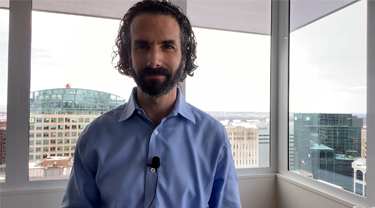For 12 years, Robin Kovitz worked closely with clients and investors on mergers and acquisitions (M&A) of multimillion-dollar companies. But in 2014, she decided to buy her own business—Baskits Inc., the largest gift basket company in Canada.
“Given the fact that the vast majority of new business ideas fail, I felt acquiring an established business would be a safer way to become an entrepreneur,” Kovitz explains. “M&A is an underused strategy. It’s the quickest way to get into a cash flowing business.”
M&A is a legal process that involves combining two companies into one: Either one company buys another company outright (acquisition) or two or more companies combine to create a new business (merger). It’s a strategic way for companies to expand globally, increase their market share and diversify their products and services.
According to a recent survey by KPMG International, nine out of 10 CEOs of large Canadian companies are thinking about making acquisitions over the next three years to expand their businesses. Four are planning major deals that will significantly impact their operations.
With recent interest rate cuts by central banks in Canada and the United States and lower inflation, more small- and medium-size companies are also looking at M&A as a top growth strategy. John Cho, KPMG’s national leader in Canada, says “all these factors point to a busier M&A market” in 2025.
"As economic headwinds begin to ease, businesses and institutional investors will naturally become more acquisitive. The supply of acquisition targets will likely increase as well, as more private equity funds exit their investments after years of cautiously sitting tight,” Cho says.

The backstory
Founded in 1984 by two women in Toronto, Baskits had earned an award-winning reputation for customizing gift baskets for all occasions filled with top-quality brands. But at the time Kovitz acquired the business, it was on a “negative trajectory,” she says.
Not anymore.
Recognized by the Globe and Mail Report on Business Magazine three years in a row (2020, 2021, 2022) as one of the fastest-growing companies in Canada, Baskits has now “acquired a real estate facility, two competitor companies and is in active discussions to acquire other gifting companies,” says Kovitz, who has a master’s degree in business administration from Harvard Business School and a bachelor’s degree of commerce from Queen’s University in Kingston, ON.
In an interview with Authority Magazine in July 2021, she talked about the life-changing experience of becoming president and CEO of a certified woman-owned company.
You should also check out
Experts share best practices for managing and mitigating risk when conducting M&As in foreign markets.
“It was a very difficult first few years turning the business around and finding my voice and style as a young, first-time CEO. The Harvard Business School wrote a case study on my journey as apparently, this is an unusual career path for a woman.”
Kovitz, who grew up in Western Canada, was named one of Canada’s Top 100 Most Powerful Women in 2017 and 2021, and in 2022 alone, her sales topped $20 million with 10% coming from exporting.
The mother of two often lectures on entrepreneurship through acquisition at Harvard and the Yale School of Management in the U.S., and her company has been featured in popular magazines, including Forbes, Elle Canada and Canadian Business.
“It’s a well-documented fact that women-led businesses tend to have greater impacts on their communities. My hope is to inspire other women to acquire and operate businesses and to, in turn, support their communities,” says the successful mompreneur.
From the beginning of her business journey, Kovitz has worked with Export Development Canada (EDC) and the Business Development Bank of Canada (BDC), which have provided financial support and advisory services, to help her achieve success.
In the second article of our two-part series, we asked David Gauthier, EDC principal, International Financing Guarantee, and Karen Hennessy, partner of the business law group, Gowling WLG, to highlight key supports available for Canadian companies looking to grow through M&A.

Gauthier: To help mid-size Canadian companies sell their business to an international buyer, EDC has many different products and services:
- Credit insurance: Safeguards your accounts receivable from non-payment, while also allowing your bank to provide them with higher margining on your operating line.
- Export Guarantee Program (EGP): Share risks with your house bank in increasing your access/size of credit facilities either for operating lines or term facilities.
- Investment Matching Program: Accelerates your company’s growth by matching investments up to $5 million.
- Account Performance Security Guarantee (APSG): To support the issuance of standby/letters of credit without impacting your access to working capital via your operating line.
- Knowledge services: Provides expert information and contacts in countries around the world where you may be interested in selling your product/service.
- Mid-Market Lending Group: Provides direct lending term solutions to facilitate an exporter’s growth.
Can EDC provide financing for an acquisition outside of North America?
Gauthier: Absolutely. The only caveat is that there are some countries that have lending restrictions, which may mean we have to structure the financing differently.
What other supports do I need to help me with the M&A process?
Hennessey: You’ll need to engage a team of professionals such as lawyers, accountants, financial advisor or investment banker. Along with that, you’ll need to devote significant internal resources to the M&A process, including a dedicated internal team that should include representatives from key departments such as finance, legal and human resources, as well as expertise/time from senior management. The number of internal resources required will depend on the size and complexity of the transaction, as well as the company’s existing capabilities.
You should also check out
EDC Women in Trade guide offers insights to help Canadian women-owned businesses succeed internationally
Is there a difference between a M&A advisor and M&A broker?
Hennessey: M&A advisors and M&A brokers offer comparable services, but their specializations and range of tasks may vary. While M&A brokers typically concentrate on finding buyers for firms and streamlining the selling process, M&A advisors are more involved in the full M&A process, which may include strategy planning, valuation, due diligence, transaction negotiation, and post-merger integration.
How do you find reliable M&A advisors?
Hennessey: It’s imperative to find M&A advisors who have a good track record and knowledge of your industry and the size of your business. You can look for advisors online, through trade associations or other professional associations, or by requesting referrals from reliable business contacts.
Before committing to any advisors, you should meet with them to talk about your goals and ambitions. Ask them about their approach to M&A, their previous experience dealing with businesses in your industry and in transactions of your size and nature, and their success in closing deals.
How do you vet a M&A advisor?
Hennessey: The most important aspect of vetting a M&A advisor is to ensure they have the experience, expertise, and resources necessary to complete a successful M&A transaction. It’s essential to do your due diligence and carefully evaluate potential advisors to find the one that is the best fit for your specific needs and goals.
Once you’ve selected a M&A advisor, it’s important to ensure that there’s a clear engagement letter that sets out in detail the services the M&A advisor will provide and how they’ll be paid—when the deal closes or if it doesn’t.
Do advisors charge to find a company suitable for you to acquire? How do they find buyers?
Hennessey: M&A brokers and advisors are typically paid a commission (success fee), often calculated as a percentage of the enterprise value of the target business. Depending on the size of the transaction and the scope of services being provided, they may also charge a retainer or work fee.
It’s important to research potential advisors and brokers carefully and evaluate their track record, experience, and reputation before engaging their services. If you’re looking to sell your business, you should specifically ask the broker/advisor about their approach to finding potential buyers.
Ideally, your advisor will already have knowledge of the companies or financial buyers in your industry and will take a proactive approach to finding a buyer as opposed to just listing the opportunity on their website and passively waiting for buyers to find it.
Robin Kovitz’s Top 3 tips for a successful M&A
1. Understand what you’re buying and selling: Both parties (buyer and seller) should clearly define what’s being sold. Is the buyer purchasing assets or shares?
2. A good deal is like a good marriage: Both parties need to compromise to close a transaction that works for both of them. Great communication is the only way to prevent misunderstandings.
3. Have a solid post-closing plan.
- What’s going to be communicated to whom and when?
- Who’ll oversee the post-closing and in what sequence?
- How long will the former owners be involved in the business and in what capacity?
Continue series

Part 1 of 2 in series








